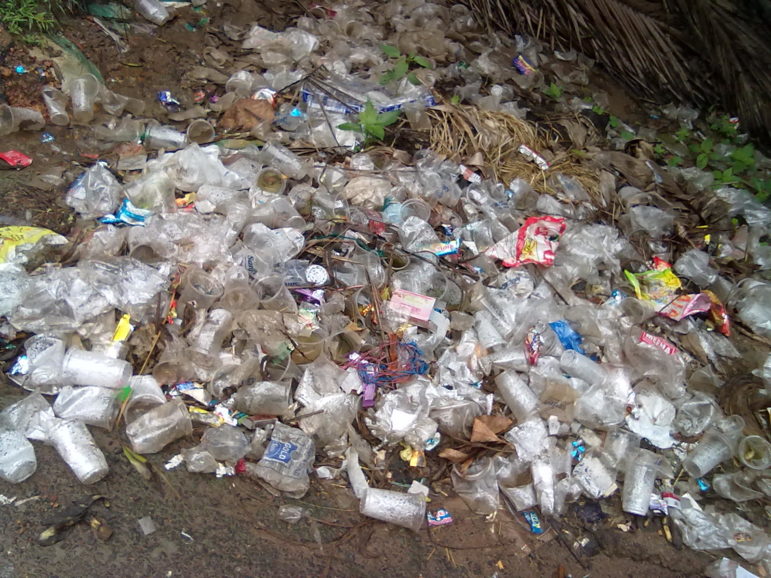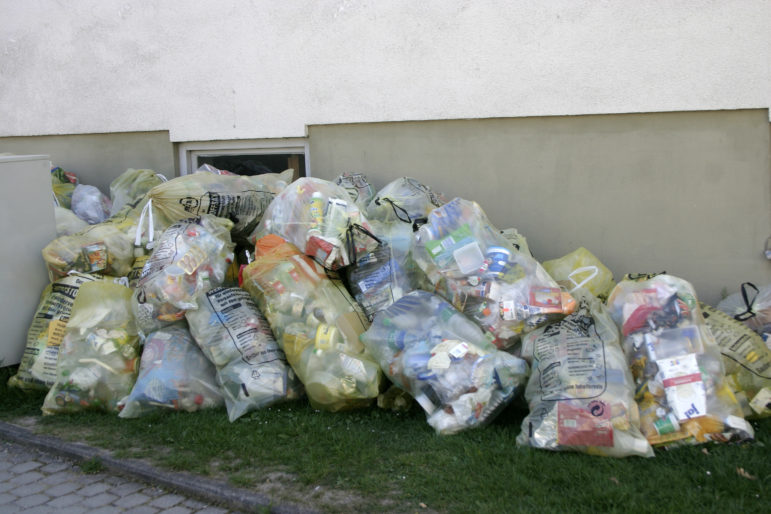TWH – A team of French scientists reported a major advance in plastic recycling technology. They have manipulated an enzyme that can transform a plastic soda bottle back into raw plastic materials. Manufacturers could potentially use that raw plastic to produce new plastic soda bottles.

‘Bottle Buyology’ at the Minnesota State Fair ‘Eco Experience’ Building – Image credit: Tony Webster – Portland, Oregon. CC BY 2.0
The use of this enzyme could allow for recycling to become more circular rather than linear. This new process could be key in preventing much of the current amount of plastic pollution. It could also eliminate the need for new oil-based chemicals to make plastic soda bottles. Current plastic recycling technology produces low-grade plastic materials. This could mark a major advance in healing the Earth.
Current plastic recycling model more is linear than circular
About 70% of plastic bottles fail to enter the recycling process. At best, those plastics go into landfills. At worst, they go into the creeks, rivers, or the ocean and remain there for thousands of years. The 30% that does enter the recycling process becomes a lower-grade plastic. It also does not provide the raw materials for new plastic bottles.
Plastic bottles are composed of polyethylene terephthalate (PET). Manufacturers produce about 70 million tons of PET each year. With 70 percent waste, that would amount to 49 million tons of PET pollution each year.
Recycling bins have plastic bottles of different colors. The first step in processing recycled plastic involves heating it to soften the plastic. When current recycling technology heat different colored bottles together, it produces a grayish-black colored plastic that has few buyers. That grayish-black plastic becomes plastic carpets or other low-grade plastics. Eventually, it will end up in a landfill, or worse, for thousands of years.

Plastic waste in Batlapalem village in India – Image credit: Venkat2336 – Own work, CC BY-SA 3.0
How new enzyme works
In PET, oxygen and carbon atoms link carbon rings. This new enzyme breaks those links apart while maintaining the integrity of those carbon rings. Those preserved carbon rings result in the raw material for more plastic bottles.
For years, ecologists have argued that some microbes could digest pollutants. Microbes have evolved over millions of years to degrade natural materials. With enough time, microbes would naturally evolve to degrade plastics. Unfortunately, the production of plastics has far outstripped microbial evolution until recently.
In 2012, scientists found a microbial enzyme that can break down PET and other plastics. They found it in a compost heap near Osaka University. Researchers called it, “leaf-branch compost cutinase (LLC).” It had evolved to break down the waxy protective coating on the plant leaves. It its natural state, this enzyme can separate the building blocks of plastic bottles. Unfortunately, it failed to do so quickly or thoroughly.
A team from France investigated whether they could “mutate” an enzyme to break down the plastic into the raw materials for more plastics. That team worked with Carbios, a sustainable plastics company.
The French team created hundreds of mutated enzymes. They tested each mutated enzyme on two criteria.
First, it would have to bind to the links between atoms and separate them. It would also have to leave the carbon rings intact. Keeping those rings would result in usable high-quality raw plastic.
Second, it would have to be able to do so at high temperatures.
Plastic bottles need a tight weave to keep the liquid inside. At 70°C (158°F), PET moves from a rigid to a more flexible state. As part of the recycling process, high heat softens that tight weave. Enzymes frequently die at that temperature.
The Cabrios team found that one mutated enzyme had much greater efficiency than others. It was 10,000 times more efficiency in breaking apart the links between atoms than the naïve enzyme.
It could also break those bonds at 72°C (161.6°F), close to the temperature of molten plastic. It took only 10 hours to break down 90% of 200 grams of PET. The team used the resulting raw plastic to produce plastic bottles of equal strength to that of conventional plastics.
The French team optimized conditions for recycling. They found that 1,000 kg of PET waste could produce 863 kg of raw materials. This process shows greater efficiency than the human digestion of starch.

Germany – Home plastic waste to be collected for recycling – Image credit: Nino Barbieri – CC BY-SA 2.5
The economics
While this process can produce raw plastics for new bottles, it will cost somewhat more. Science Magazine reported that Alain Marty, the chief scientific officer at Carbios, has said that Carbios is building a demonstration plant. Marty has plans for that plant to recycle 100s of tons of PET by 2021.
In Chemical and Engineering News, Kohei Oda, of the Kyoto Institute of Technology, discussed this advance. He said that it should work “on an industrial scale.” He saw a potential for a “circular economy of PET bottles.” Gert Weber of the Helmhotz Center Berlin for Materials and Energy, also spoke about this finding. He suggested that other enzymes could recycle other synthetic polymers.
Major plastic manufacturers such as Pepsi and L’Oreal have partnered with Carbios. They want to accelerate development of this enzyme. Carbios has said that they want to move up to industrial scale recycling by 2025.
The Wild Hunt is not responsible for links to external content.
To join a conversation on this post:
Visit our The Wild Hunt subreddit! Point your favorite browser to https://www.reddit.com/r/The_Wild_Hunt_News/, then click “JOIN”. Make sure to click the bell, too, to be notified of new articles posted to our subreddit.